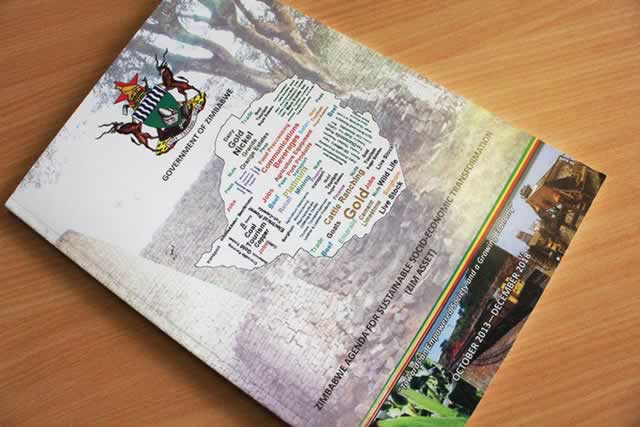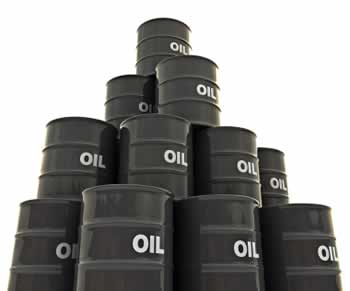Zim-Asset: So far so good

Peacemaker Zano Correspondent
The five-year economic recovery driver, Zim-Asset, is slowly but surely showing positive results that can stimulate the country’s economy as we reach 2018. There has been noise in the private media by opposition parties that 2013 polls were haunting President Mugabe’s Government. Such utterances from detractors are meant to provoke the public against the ruling Government.
What surprises most is that when two local fertiliser companies, Chemplex Corporation Ltd and Zimbabwe Fertiliser Company, were added on the sanctions list by the US, none of these detractors came out berating that. As it stands, opposition parties in Zimbabwe are happy and satisfied each timeGovernment encounters challenges. The MDC-T has even mentioned that it wanted to witness the nation’s economy squealing.
Zim-Asset, which is anchored on four strategic clusters of economic growth, namely Value Addition and Beneficiation, Infrastructure and Utilities, Food Security and Nutrition as well as Social Services and Poverty Eradication, is currently implementing a number of projects that are meant to empower the indigenous Zimbabweans.
Pleasing to note is that employees who were dismissed from their jobs on notice in 2015 will soon get business start-up loans from the Small and Medium Enterprises Development Corporation. As reported, the loans were facilitated by the Public Service, Labour and Social Welfare Ministry and will be funded by the National Social Security Authority.
A closer look at the Infrastructure and Utilities cluster shows that a lot is happening especially in the energy sector. There is a viable project, construction of Kariba South Power Extension, which currently in progress. Upon its completion, this project will enhance the supply and distribution of electricity nationwide.
Most people will agree that the supply of electricity has improved by a great margin. In most cities and towns, loadshedding is now a thing of the past. This could be a result of a number of solar plant projects taking place and imports.
A Chinese energy firm, Chint Electric Company, through its local partner, Intratrek Zimbabwe, is in the venture of power generation. The power generation project is an establishment of a solar plant in Gwanda. Construction of a solar plant project will also decrease Zimbabwe’s crippling power deficit, thereby reviving most industries that have been lying idle for quite some time.
It is pleasing that most highways in the country are being rehabilitated under the infrastructure and utilities cluster. Completion of the Plumtree-Bulawayo-Harare-Mutare highway is one of the great achievements under the economic blueprint. Whilst the highway was being constructed, it created a number of jobs for scores of people in the communities where that road was being upgraded.
Transport and Infrastructural Development Minister Dr Joram Gumbo recently noted that dualisation of Harare-Beitbridge highway was in the pipeline as companies that will be responsible for the design of that highway had been identified. Rehabilitation of that road will also create a number of jobs for the people who live along that highway.
Harare-Masvingo-Beitbridge highway is an economic lifeline which links South Africa and Zimbabwe. Completion of that road will boost trading patterns between the countries.
The housing sector is also doing a splendid job. In Harare there are a number of Government flats in Adbennie and Tafara. Also, housing stands were availed in areas like Caledonia. Such a move by the housing sector is imperative as it reduces the large number of applicants on the housing waiting list.
The Food Security and Nutrition cluster is also performing well. Considering that the nation received farming equipment from Brazil which includes tractors and irrigation equipment, recovery of the agricultural sector will definitely boost the country’s food security.
Irrigation equipment is necessary especially at a time when the country is experiencing drought due to El-Nino. While addressing a rally in Bindura recently, President Mugabe emphasized that Government would ensure that massive irrigation programmes are implemented nationwide as a measure to counter drought. As of now, Cashel Valley irrigation scheme in Chimanini is a practical example of a flourishing project.
It is heartening that Finance and Economic Development Minister Patrick Chinamasa noted that Government was promoting the resuscitation of the cotton industry.
While delivering the 2016 National Budget, Minister Chinamasa said Government would ensure that cotton farmers got free cotton inputs for three consecutive seasons. This year, almost all cotton farmers received free inputs from Government, although there was little rainfall. Such efforts are genuine indicators of commitment to economy recovery by Government.
The Value Addition and Beneficiation cluster ensures that the country does not export raw minerals such as diamonds and platinum. Most mining companies were urged to build refineries near their mining areas. In addition, 25 Zimbabwean students from Zimbabwe School of Mines will this year travel to China for training in diamond cutting and polishing. The training is in tandem with value addition of mineral as advocated in the country’s economic blueprint, Zim-Asset.
As much as Government is doing its best to recover the economy, the broader community should also be part of it. The private sector should chip in and support Government in resuscitating the ailing economy. Economic revival is beneficial to every Zimbabwean as it will provide basic necessities of life such as jobs to sustain the economy in terms of income and tax revenues as well as reinstatement of wealth through the restoration of property values.









Comments